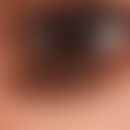Synonym(s)
HistoryThis section has been translated automatically.
Gagel, 1941
DefinitionThis section has been translated automatically.
Benign, localized course of Langerhans cell histiocytosis (LZH) with solitary or multiple, possibly painful, osteolytic foci (eosinophilic granulomas), which occurs mainly in young children. This type of Langerhans cell histiocytosis (LHZ) accounts for approximately 70-80% of all pediatric LHZs (Plasschaert F et al 2002).
You might also be interested in
ManifestationThis section has been translated automatically.
ClinicThis section has been translated automatically.
Pain and swelling in the area of osteolytic foci (skull, spine, pelvis, shoulder), if any.
- Skin manifestations (rare): Yellowish to brownish papules or nodules (see Fig.) as well as circumscribed, inflammatory, possibly ulcerated plaques or nodules especially on the capillitium, in the temporal region, in the anogenital region (similar to Abt-Letterer-Siwe disease, but not occurring in such a disseminated multiplicity).
- Mucosal changes: squamous or nodular PLaques or nodules prone to ulceration.
- Lung (see below Pulmonary Langerhans cell histiocytosis): Infiltrates and cysts localized mainly in the apices and upper fields of the lung. 20% of these patients also have bony lesions and diabetes insipidus. Blood eosinophilia is rare. 80% of patients suffer pneumothorax during the course of the disease.
- Skeletal: by far the most common manifestation): Bone changes manifest mostly as unifocal, but also as mulifocal foci, which are radiographically detectable as osteolytic brightenings. They are usually only mildly symptomatic. Pain, spontaneous fractures and diabetes mellitus may occur c0mplicatively.
Complication(s)(associated diseasesThis section has been translated automatically.
TherapyThis section has been translated automatically.
No standardized therapy. Spontaneous healing is frequent.
Symptomatic therapy of the skin according to the clinic. In inflammatory areas, glucocorticoids such as 0.1% triamcinolone acetonide cream(e.g., Triamgalen, R259 ) and, in superinfection, antiseptic externals such as 10% polyvidone iodine solution R203. Hyperkeratotic skin lesions can be addressed with keratolytic ointments such as 5% salicylic acid ointment (e.g., Salicylvaseline Lichtenstein, R228 ) or oil.
In case of multiple skin lesions, therapy with 20% mechlorethamine may be attempted.
If one or more bones are affected, surgical removal by surgeons with subsequent radiotherapy if necessary. Asymptomatic bone lesions can also be observed without treatment. Isolated skin foci can be excised or treated with soft X-rays.
Progression/forecastThis section has been translated automatically.
LiteratureThis section has been translated automatically.
Cieza-Diaz ED et al (2016) Facial involutive tumors: A case of tumor-like eosinophilic granuloma of the skin. Indian Journal of Dermatology, Venereology, and Leprology 82: 87-89.
- Eroglu A et al (2004) Solitary eosinophilic granuloma of sternum. Ann Thorac Surg 77: 329-33
- Hosaka N et al (2002) Kimura's disease with unusual eosinophilic epithelioid granulomatous reaction: a finding possibly related to eosinophil apoptosis. Hum Pathol 33: 561-564
- Plasschaert F et al (2002) Eosinophilic granuloma. A different behavior in children than in adults. J Bone Joint Surg Br 84: 870-872.
- Sessa S et al (1994) Treatment of Langerhans-Cell Histiocytosis in Children - Experience at the childrens Hospitals of Nancy. J of Bone & Joint Surgery - American Volume 76A: 1513-1525.
- Woo KI et al (2003) Eosinophilic granuloma of the orbit: understanding the paradox of aggressive destruction responsive to minimal intervention. Ophthal Plast Reconstr Surg 19: 429-439.
Incoming links (10)
Borrelia lymphocytoma; Cd207; Eosinophilic granuloma; Lipid granuloma; Povidone-iodine solution 10%.; Pulmonary langerhans cell histiocytosis; Salicylic acid oil 2/5 or 10% (nrf 11.44.); Salicylic acid ointment 1/2/3/5/10 or 20% (nrf 11.43.); Triamcinolone acetonide cream hydrophilic 0,025/0,05/0,1% (nrf 11.38.); Xanthomatization;Outgoing links (14)
Abt-letterer-siwe disease; Glucorticosteroids topical; Keratolytics; Langerhans cell histiocytosis (overview); Papel; Povidone-iodine; Povidone-iodine solution 10%.; Pulmonary langerhans cell histiocytosis; Radio; Salicylic acid; ... Show allDisclaimer
Please ask your physician for a reliable diagnosis. This website is only meant as a reference.






